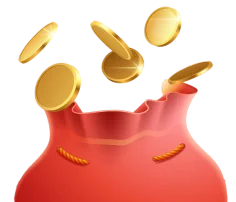Embark on a journey of knowledge! Take the quiz and earn valuable credits.
Take A QuizChallenge yourself and boost your learning! Start the quiz now to earn credits.
Take A QuizUnlock your potential! Begin the quiz, answer questions, and accumulate credits along the way.
Take A QuizPlease allow ads on our site
LoginM meaning in Computer Assembly Language ?
Computer Assembly Language Miscellaneous in Computer Assembly Language 1 year ago
Multiplication (often denoted by the cross symbol ×, by the mid-line dot operator ⋅, by juxtaposition, or, on computers, by an asterisk *) is one of the four elementary mathematical operations of arithmetic, with the other ones being addition, subtraction, and division. The result of a multiplication operation is called a product.
The multiplication of whole numbers may be thought of as a repeated addition; that is, the multiplication of two numbers is equivalent to adding as many copies of one of them, the multiplicand, as the quantity of the other one, the multiplier. Both numbers can be referred to as factors.
a × b = b + ⋯ + b ⏟ a times {\displaystyle a\times b=\underbrace {b+\cdots +b} _{a{\text{ times}}}}For example, 4 multiplied by 3, often written as 3 × 4 {\displaystyle 3\times 4} and spoken as "3 times 4", can be calculated by adding 3 copies of 4 together:
3 × 4 = 4 + 4 + 4 = 12 {\displaystyle 3\times 4=4+4+4=12}Here, 3 (the multiplier) and 4 (the multiplicand) are the factors, and 12 is the product.
One of the main properties of multiplication is the commutative property, which states in this case that adding 3 copies of 4 gives the same result as adding 4 copies of 3:
4 × 3 = 3 + 3 + 3 + 3 = 12 {\displaystyle 4\times 3=3+3+3+3=12}Thus the designation of multiplier and multiplicand does not affect the result of the multiplication.
The multiplication of integers (including negative numbers), rational numbers (fractions) and real numbers is defined by a systematic generalization of this basic definition.
Multiplication can also be visualized as counting objects arranged in a rectangle (for whole numbers), or as finding the area of a rectangle whose sides have some given lengths. The area of a rectangle does not depend on which side is measured first—a consequence of the commutative property.
The product of two measurements is a new type of measurement. For example, multiplying the lengths of the two sides of a rectangle gives its area. Such products is the subject of dimensional analysis.
The inverse operation of multiplication is division. For example, since 4 multiplied by 3 equals 12, 12 divided by 3 equals 4. Indeed, multiplication by 3, followed by division by 3, yields the original number. The division of a number other than 0 by itself equals 1.
Multiplication is also defined for other types of numbers, s reference
User submissions are the sole responsibility of contributors, with TuteeHUB disclaiming liability for accuracy, copyrights, or consequences of use; content is for informational purposes only and not professional advice.
Take Quiz To Earn Credits!
Turn Your Knowledge into Earnings.

No matter what stage you're at in your education or career, TuteeHub will help you reach the next level that you're aiming for. Simply,Choose a subject/topic and get started in self-paced practice sessions to improve your knowledge and scores.
Explore Other Libraries

Join Our Community Today
Ready to take your education and career to the next level? Register today and join our growing community of learners and professionals.

Your experience on this site will be improved by allowing cookies. Read Cookie Policy
Your experience on this site will be improved by allowing cookies. Read Cookie Policy